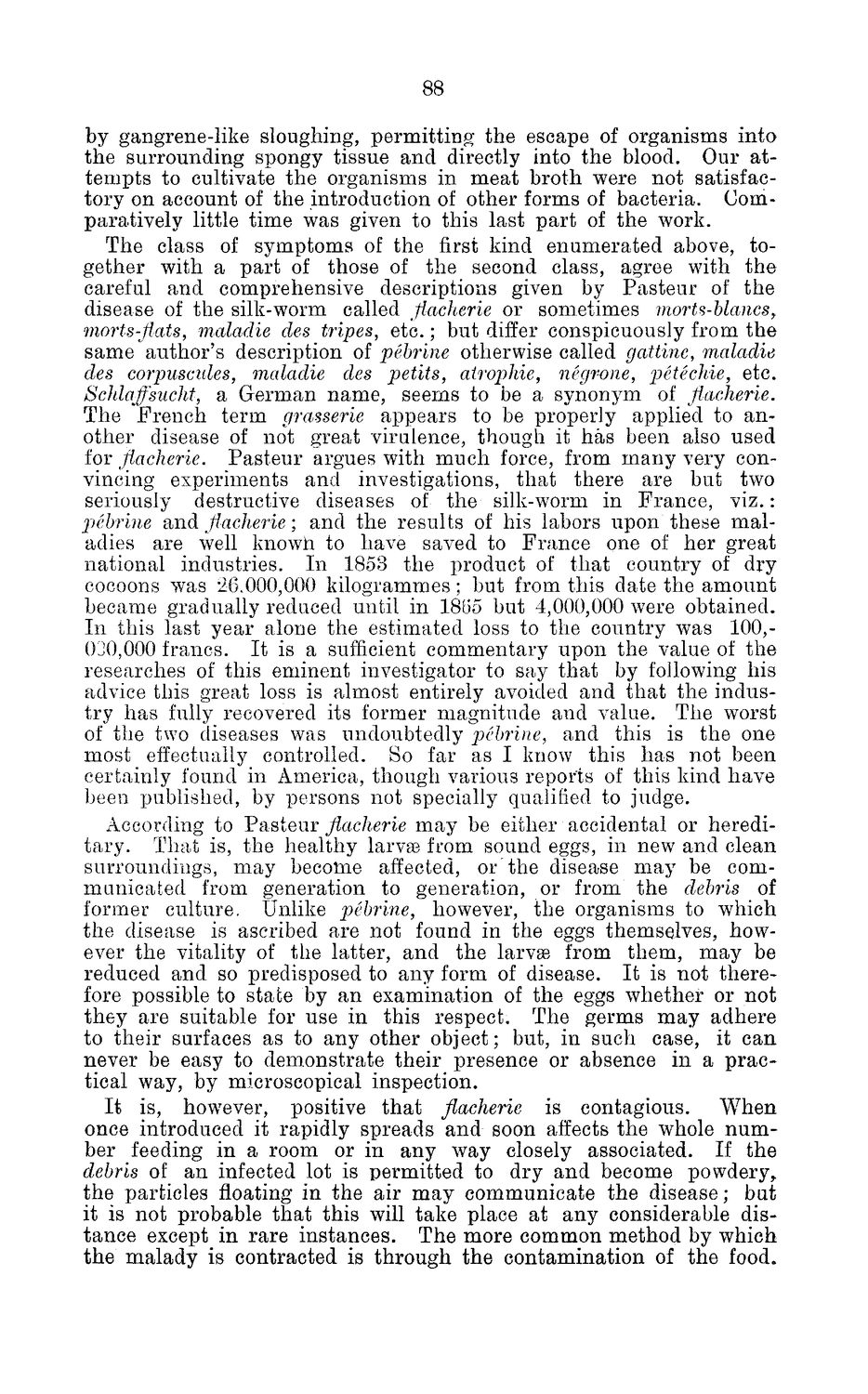| |
| |
Caption: Board of Trustees Minutes - 1884
This is a reduced-resolution page image for fast online browsing.

EXTRACTED TEXT FROM PAGE:
88 by gangrene-like sloughing, permitting the escape of organisms into the surrounding spongy tissue and directly into the blood. Our attempts to cultivate the organisms in meat broth were not satisfactory on account of the introduction of other forms of bacteria. Comparatively little time was given to this last part of the work. The class of symptoms of the first kind enumerated above, together with a part of those of the second class, agree with the careful and comprehensive descriptions given by Pasteur of the disease of the silk-worm called Jiacherie or sometimes morU-blancs, morts-flats, maladie des tripes, etc.; but differ conspicuously from the same author's description of pebrine otherwise called gattine, maladie des corpusades, maladie des petits, atropine, negrone, petechie, etc. Schlaffsucht, a German name, seems to be a synonym of Jiacherie. The French term grasserie appears to be properly applied to another disease of not great virulence, though it has been also used for Jiacherie. Pasteur argues with much force, from many very convincing experiments and investigations, that there are but two seriously destructive diseases of the silk-worm in France, viz.: pebrine and Jiacherie; and the results of his labors upon these maladies are well known to have saved to France one of her great national industries. In 1858 the product of that country of dry cocoons was 26,000,000 kilogrammes; but from this date the amount became gradually reduced until in 1885 but 4,000,000 were obtained. In this last year alone the estimated loss to the country was 100,030,000 francs. It is a sufficient commentary upon the value of the researches of this eminent investigator to say that by following his advice this great loss is almost entirely avoided and that the industry has fully recovered its former magnitude and value. The worst of the two diseases was undoubtedly pebrine, and this is the one most effectually controlled. So far as I know this has not been certainly found in America, though various reports of this kind have been published, by persons not specially qualified to judge. According to Pasteur Jiacherie may be either accidental or hereditary. That is, the healthy larvae from sound eggs, in new and clean surroundings, may become affected, or the disease may be communicated from generation to generation, or from the debris of former culture. Unlike pebrine, however, the organisms to which the disease is ascribed are not found in the eggs themselves, however the vitality of the latter, and the larvae from them, may be reduced and so predisposed to any form of disease. It is not therefore possible to state by an examination of the eggs whether or not they are suitable for use in this respect. The germs may adhere to their surfaces as to any other object; but, in such case, it can never be easy to demonstrate their presence or absence in a practical way, by microscopical inspection. It is, however, positive that jiacherie is contagious. When once introduced it rapidly spreads and soon affects the whole number feeding in a room or in any way closely associated. If the debris of an infected lot is permitted to dry and become powdery, the particles floating in the air may communicate the disease; but it is not probable that this will take place at any considerable distance except in rare instances. The more common method by which the malady is contracted is through the contamination of the food.
| |